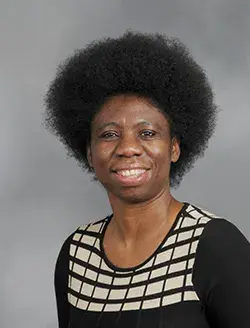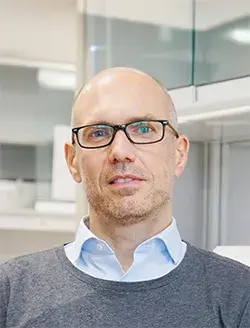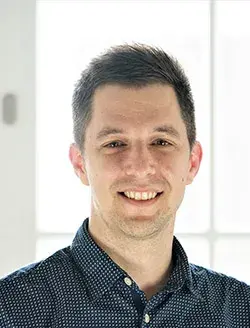会议与活动
-

Webinar - Blood plasma-derived extracellular vesicles: A minimally invasive tool for predicting response to cancer treatment
Tuesday, November 29, 2022 at 10:00 am (EST)
Speaker: Chioma M. Okeoma, Ph.D.
My laboratory investigates how host factors expressed in host cells or present in the extracellular milieu, such as extracellular vesicles and extracellular condensates, regulate response against infective agents and disease pathogenesis. Our translational experiments use primary cells, animal models, and human clinical specimens to study spatiotemporal regulation of host factors and their effects on clinical outcomes. We use integrative scientific approaches including multimodal datasets, computational modeling, Omics technologies, and cellular and molecular biology experimental tools in our studies. Discoveries made through this area of research will expand our knowledge and may lay the foundation for development of new tools and strategies for treatment and prevention of diseases. My laboratory provides an environment that encourages, nurtures, and values diversity, inclusivity, and innovation. My laboratory is funded by multiple active grants. We also have multiple pending grants. -

Webinar - RAS Genes in Development and Cancer
Wednesday, October 5, 2022 at 10:00 am (EDT)
Speaker: Matthias Drosten, Ph.D.
Matthias Drosten studied Biology at the University of Bochum in Germany. He later joined the laboratory of Professor Brigitte Pützer at the University of Essen Medical School (Germany) where he obtained his Ph.D. for his work on the role of the RET oncogene in thyroid cancer. In 2004 he moved to Spain and joined the laboratory of Dr. Mariano Barbacid at the Spanish National Cancer Research Center (CNIO) in Madrid as a postdoctoral fellow to work on RAS signaling and biology. In 2008 he acquired a permanent position as a staff scientist in the same group and expanded his research interests to the role of KRAS in lung cancer with special emphasis on the generation of genetically-engineered mouse models. In 2021 he joined the Cancer Research Center (CIC) in Salamanca (Spain) as a group leader where he continues to focus his research efforts on KRAS signaling and lung cancer. -

Webinar - Restoring stem cell fate and behavior outside their native niche
Tuesday, June 28, 2022 at 10:00 a.m. (EDT)
Speaker: Matthew Tierney, Ph.D.
Adult stem cells reside in defined niches and depend on specialized cues to preserve their identity and instruct behavior. Early in my career, I studied the dynamic interplay between stem cells and their microenvironment in skeletal muscle. Stem cells played executive and adaptive roles, autonomously remodeling physical cues to balance growth and repair while remaining susceptible to inflammatory cues that could promote chronic degeneration. In various tissues, the dissection of stem cell-niche interactions has informed therapeutic strategies that aim to exploit their regenerative potential for a range of conditions, from wounding to aging. In the hair follicle, a particularly rich set of stem cell-niche interactions control self-renewal and differentiation not only to each hair lineage, but can unlock a wound-related plasticity that yields all skin lineages. As a postdoctoral fellow, I became interested in the signals that control stem cell plasticity across tissue compartments during epidermal repair. Timely resolution of this multipotent state has long remained elusive and can act as a barrier to appendage formation in wounded or grafted skin. By leveraging our discovery that hair follicle stem cells exhibit a wound-like epigenetic signature in culture, I identified key niche signals that lie at the intersection between homeostatic regeneration and wound-enabled plasticity. Local production of these signals is dysregulated upon wounding and can be manipulated to push stem cell contribution to hair regrowth or wound re-epithelialization. Outside the niche, temporal control of their activity enabled the ex vivo modeling of stem cell fate decisions normally observed only within the intact hair follicle. Together, this work demonstrates the effectiveness of targeting wound-related niche signals to restore proper stem cell function in the skin. It also establishes a highly tractable platform for the reconstruction and future interrogation of stem cell-niche crosstalk. -

Webinar - The SARS-CoV-2 RNA-protein interactome at subgenome resolution
Thursday, April 21, 2022 at 10:00 a.m. (EDT)
Speaker: Mathias Munschauer, Ph.D.
Characterizing the interactions that SARS-CoV-2 viral RNAs make with host cell proteins during infection can improve our understanding of viral RNA functions and the host innate immune response. Using RNA antisense purification and mass spectrometry (RAP-MS), we recently characterized the first atlas of human and viral proteins that directly and specifically bind to SARS-CoV-2 RNAs in infected human cells. We now expand these results to different cell types and resolve the interactomes of genomic and subgenomic viral RNAs separately. We report a subgenome-resolved network of host RNA binders and find quantitative differences in the enrichment of host factors towards different viral RNA types, indicative of distinct binding preferences within the SARS-CoV-2 RNA-protein interactome. We globally map direct interaction sites of viral and host cell proteins on SARS-CoV-2 RNAs and use genetic perturbation together with pharmacological inhibition to demonstrate the functional relevance of several direct RNA binders in SARS-CoV-2 infections. The identification of host dependency factors and defense strategies as presented here provides a general roadmap for dissecting the biology of RNA viruses and the interactions between hosts and pathogens at the molecular level with therapeutic implications.